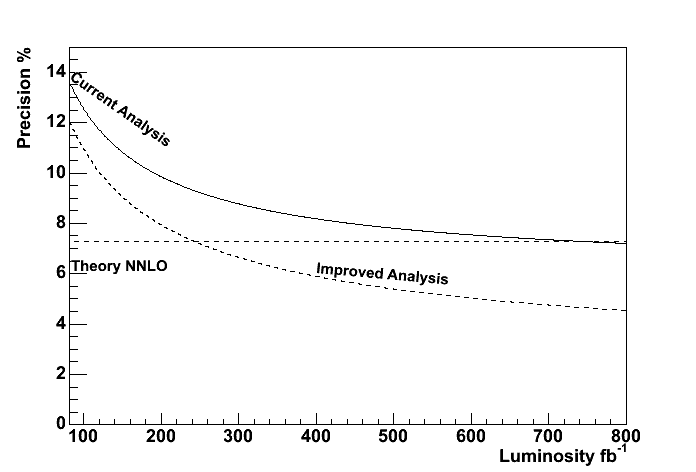BaBar Research Program
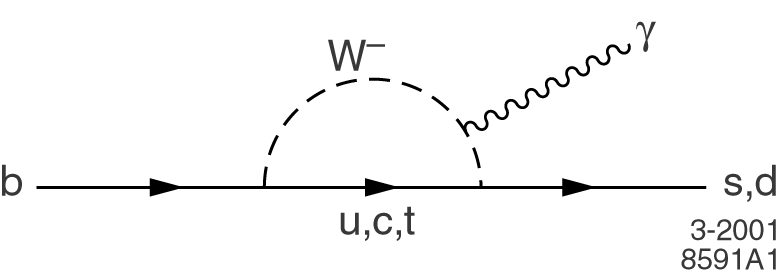
BaBar Research Program

Feynman Diagram of a "Penguin" Decay
My research focuses on experimentally studying the quantum corrections of heavy quark decays to search for evidence of new particles and interactions. The loop diagram above shows the Standard model process for the radiative electromagnetic decays b->s gamma and the more suppressed b->d gamma . These decays are of special interest because new high mass particles may appear in the loop causing significant deviations from the expected
Standard Model decay rate. For example in a popular extension to the Standard
model known as supersymmetry the additional new particles appearing in the
loop exactly cancel the standard model process if the symmetry is exact (each
standard model particle would have a superpartner of exactly the same mass).
In this case the process vanishes. The extent to which is does not can be
viewed as a measure of how much the symmetry is broken if such a theory is
a true description of nature. The ability to detect differences from
the standard model is due both to the existence of precise predictions for the Standard model rates and the development of sensitive experimental techniques. The standard model prediction has recently been improved to the three loop level (NNLO) . Our group has developed sensitive experimental techniques to precisely measure these decays at the BaBar experiment described below and test these predictions.

The BaBar Detector is located on the PEPII storage ring at Stanford Linear Acccelerator Lab (SLAC)
The BaBar experiment collides electrons and positrons provided by the SLAC linear accelerator (linac) which injects them into the high luminosity PEPII storage rings. The two rings shown below collide at BaBar detector located at bottom of the picture above. The collisions occur at 10.56 GeV to make millions of pairs of B - anti B mesons.
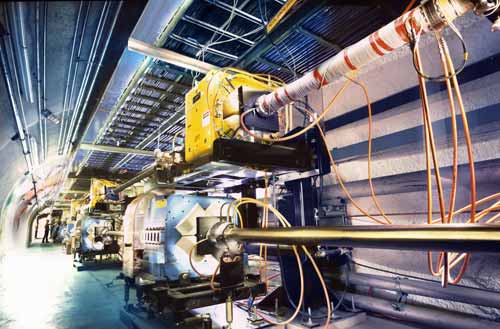
The PEPII electron-positron storage ring
The BaBar detector shown below is designed to study the decays of the B mesons.
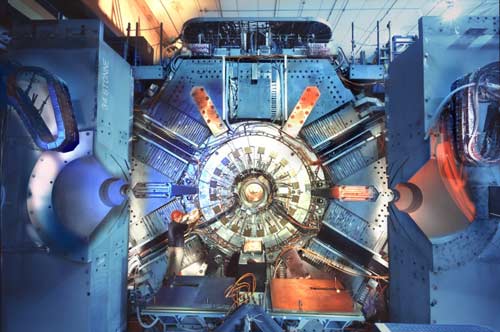
The BaBar Detector
The BaBar Detector is a general purpose facility for studying the copious quantities of B's,D's and taus produced. I contributed extensively to the design, construction and operation of this detector particularly the calorimeter. The calorimeter is identifies electrons and photons and precisely measures their energy with an array of 6650 thalium doped trapezoidal CsI crystals,shown during assembly below.

Installing the BaBar calorimeter
The identifying signature of the b->sg decays is a high energy photon which is detected by the calorimeter. I have conducted a series of experiments that have led to a number of publications Measurement of the inclusive b to s gamma rate , Measurement of the exclusive B to K* gamma rate , and Search for the B to rho gamma and B to omega gamma Decays . The current focus is to provide the definitive measurement of the b->sg process with the full BaBar data set (800 fb-1) . Shown below is our measurement (labelled BaBar Incl.) on (82 fb-1) compared to previous measurements and theory. Our measurement has less potential bias than previous measurements because backgrounds are reduced by tagging a lepton from the recoiling B rather than the signal B decay. We are thus less sensitive to the difficult modelling the fragmentation of the s quark.

Our measurement compared to previous measurements and theory.
The world average can be used to constrain new physics models as shown below. A favorite particle to compare to is the two doublet charged Higgs which occurs in supersymmetric models. Note how much more powerful the constraints from our measurement are compared to direct searches.
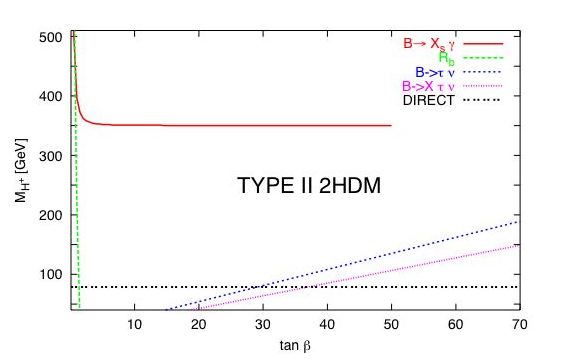
Constraints on the charge Higgs (from Gambino & Misiak)
We have developing our technique to increase precision. Shown below is how we expect the precision to improve as the size of the dataset increases.
